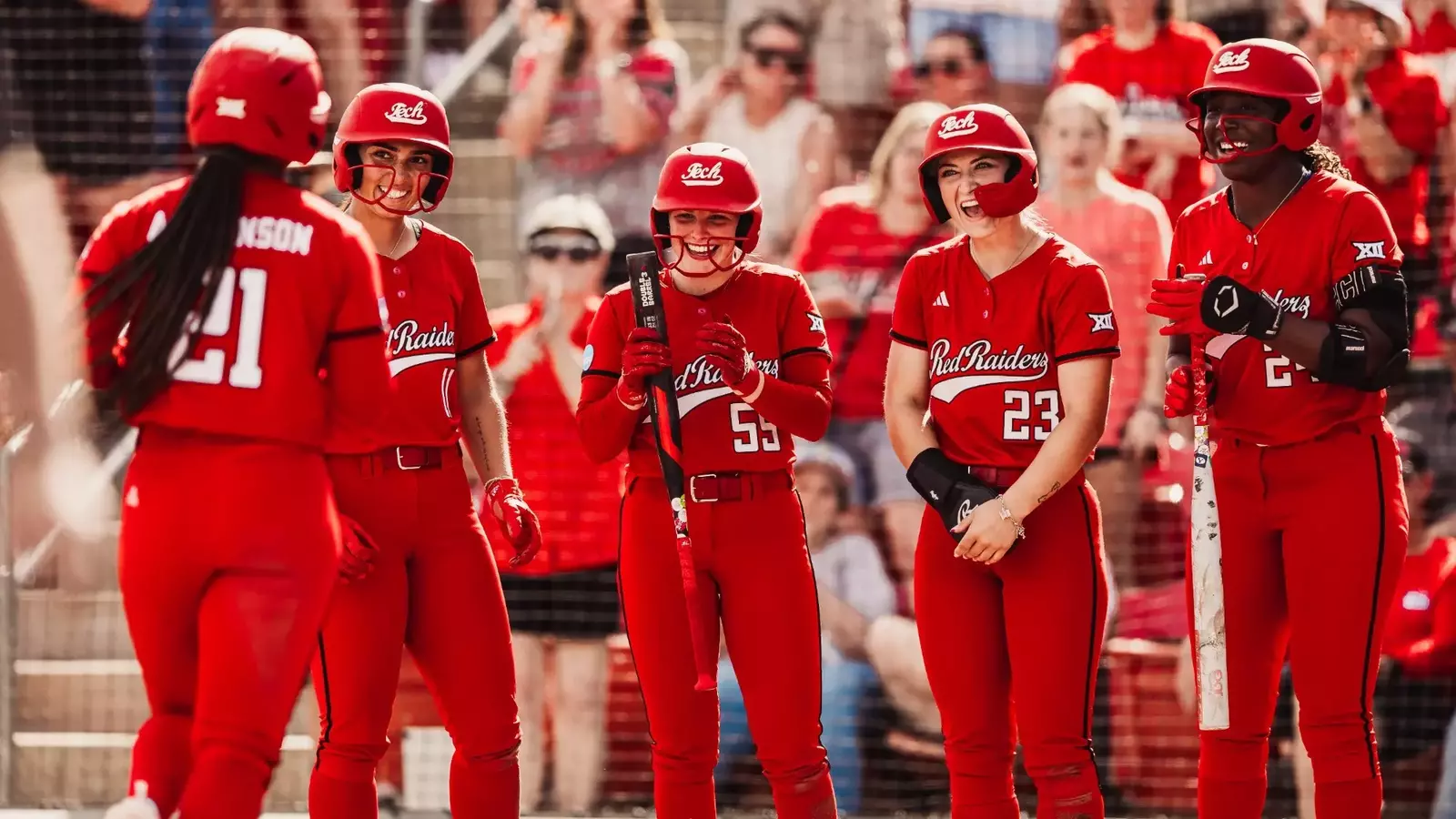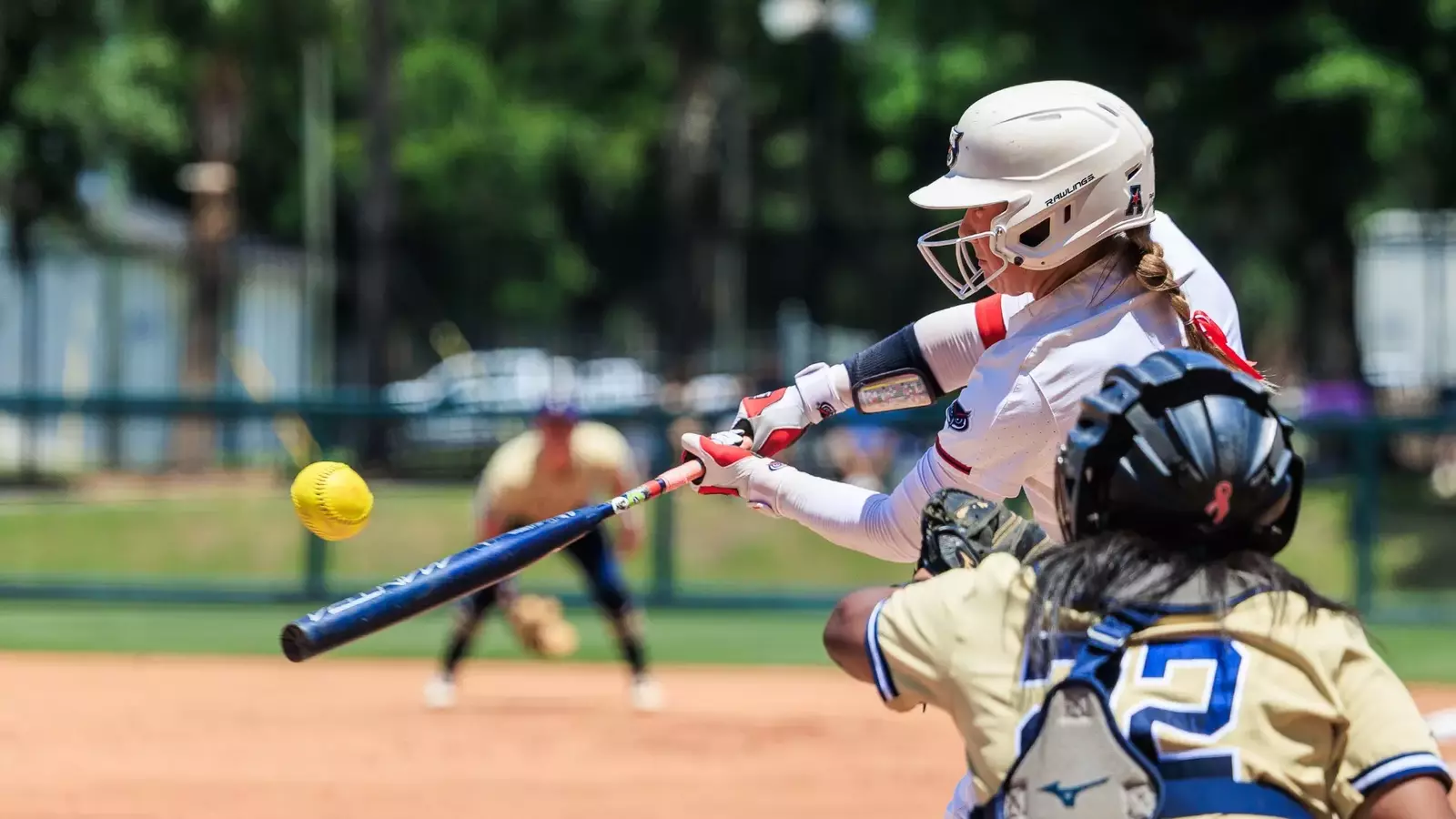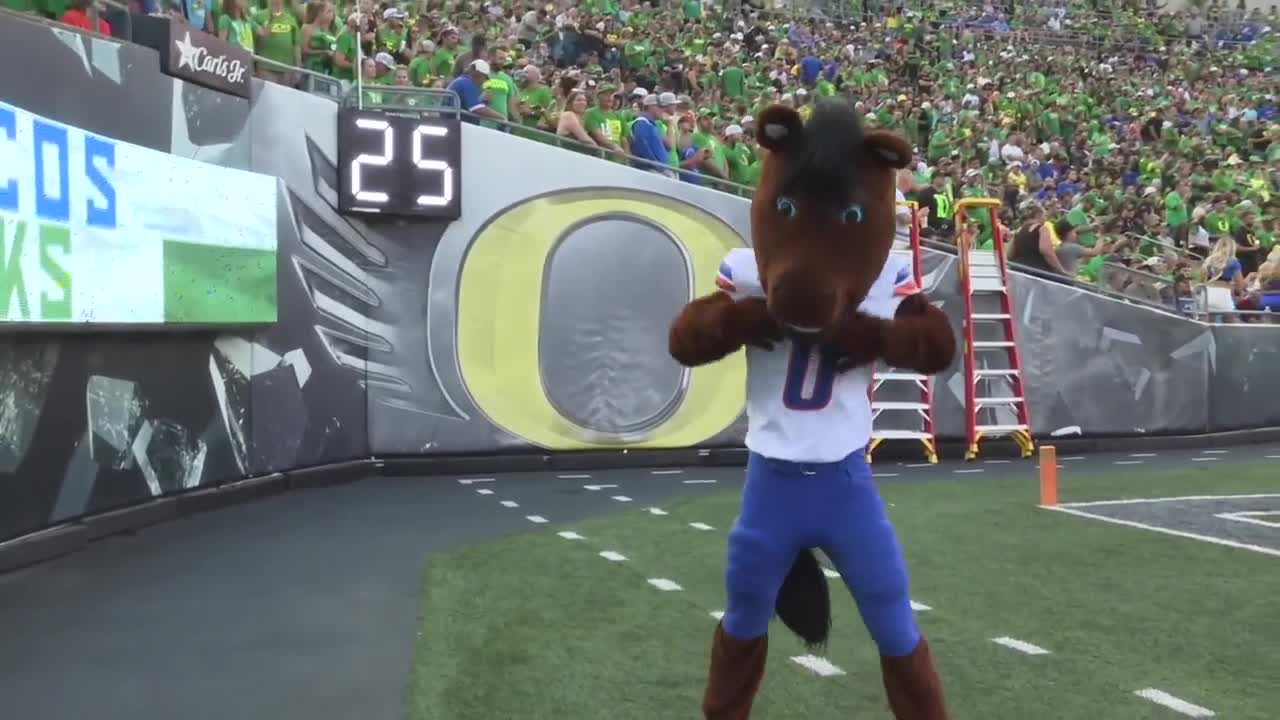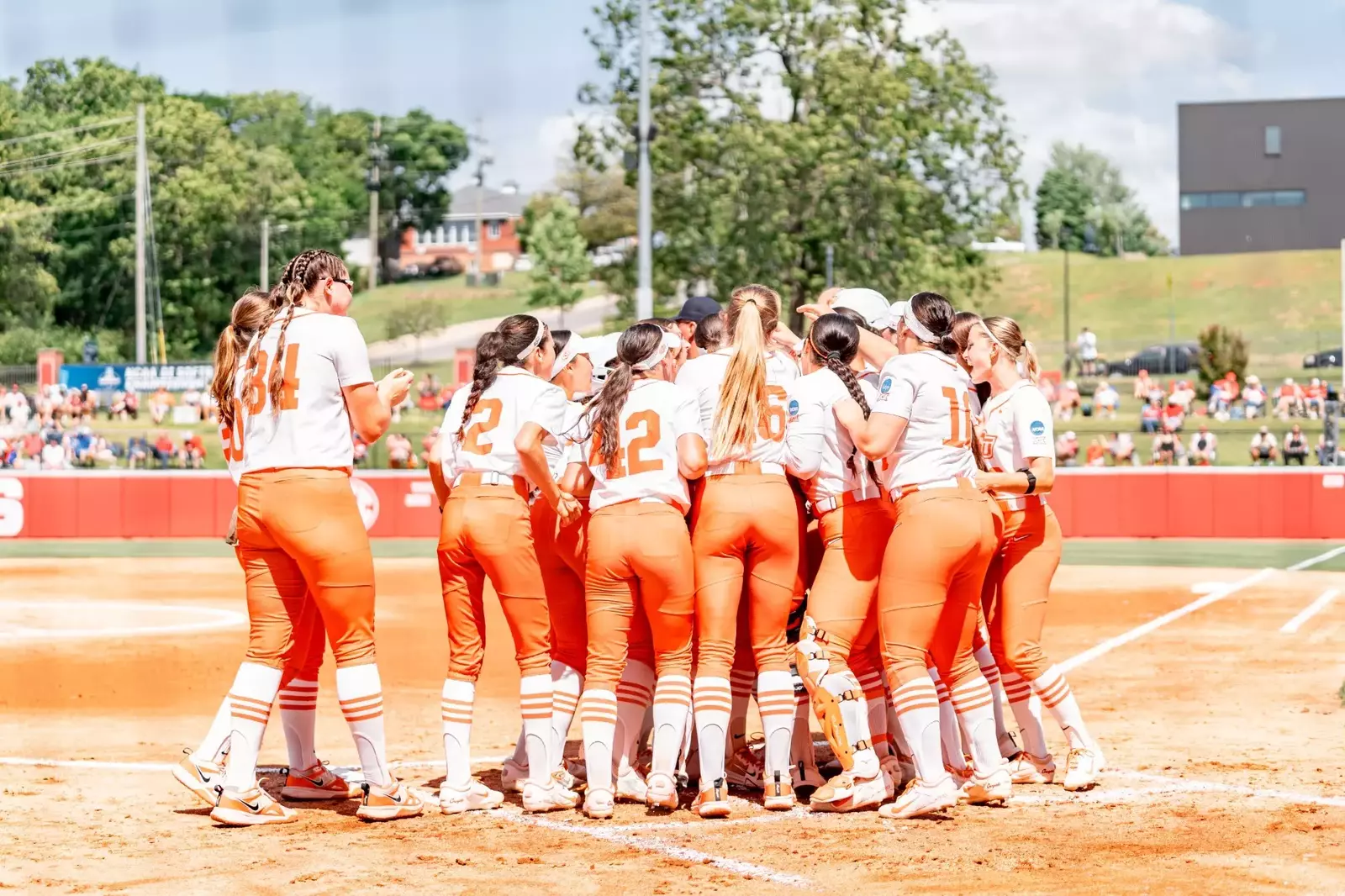NIL
How NIL is widening the basketball gap between Power Five schools and mid-majors – The Statesman
A graphic illustrating a basketball sitting in a hoop surrounded by the names of major collegiate athletic conferences, repeated NIL text and money. NIL deals are impacting student-athletes’ priorities, influencing decisions on professional goals and financial opportunities. ILLUSTRATED BY HENNA JEONG/THE STATESMAN In the 2025 NCAA Division I men’s basketball tournament, also known as “March […]


In the 2025 NCAA Division I men’s basketball tournament, also known as “March Madness,” the Elite Eight consisted of the top seed from all four regions, with the second seed from three of the four regions and third-seeded Texas Tech.
For the first time since the tournament expanded to 32 teams in 1975, the Sweet Sixteen featured teams only from the Power Five conferences, which include the Atlantic Coast Conference (ACC), Big Ten Conference (Big Ten), Big 12 Conference (Big 12), Pacific-12 Conference (Pac-12) and Southeastern Conference (SEC).
March Madness, particularly on the men’s side, has long been defined by Cinderella stories and unforgettable upsets, where lower-seeded teams — often hailing from mid-major leagues — defy the odds and capture the hearts of fans nationwide. This unpredictability has been the tournament’s allure: a thrilling ride where anything is possible.
In the past decade, there have been two remarkable Cinderella runs. In 2022, 15th-seeded Saint Peter’s from the Metro Atlantic Athletic Conference reached the Elite Eight, stunning second-seeded Kentucky (SEC), seventh-seeded Murray State and third-seeded Purdue (Big Ten), respectively, en route.
In 2018, 11th-seeded Loyola Chicago — then representing the Missouri Valley Conference — and the iconic Sister Jean survived and advanced all the way to the Final Four, downing sixth-seeded Miami (ACC), third-seeded Tennessee (SEC), seventh-seeded Nevada and ninth-seeded Kansas State (Big 12), respectively, on the way.
With the absences of Cinderellas and a general lack of upsets in this year’s March Madness, it is time to examine a possible correlation to the most significant shift in collegiate athletics since the Peacocks’ miraculous run: NIL.
What is NIL and how does it specifically benefit Power Five schools?
NIL, which stands for “name, image and likeness,” refers to an individual’s legal entitlement to control the commercial use of their personal brand. Historically, college athletes were prohibited from capitalizing on their fame financially, effectively forfeiting their NIL rights when they committed to collegiate sports programs. However, nearly four years ago, a combination of NCAA regulatory changes and state legislation reinstated these rights, empowering student-athletes to enter into lucrative sponsorship agreements.
Power Five schools, with their expansive resources, extensive media visibility and well-established networks, are uniquely positioned to attract high-value opportunities. While student-athletes are currently not allowed to be paid by their schools, this could change soon as well. The NCAA’s Division I Board of Directors has approved proposed changes contingent on the landmark $2.8 billion House v. NCAA settlement — a consolidated lawsuit brought by athletes challenging restrictions on their ability to profit from NIL. If finalized, the plan would allow schools to distribute up to $20.5 million annually to student-athletes.
At the end of 2024, CNBC unveiled a list of the 75 wealthiest college sports programs. Among the schools listed, only six were not members of the Power Five conferences. All six of these institutions ranked 67th or higher in the ranking and came from just three leagues: the American Athletic Conference (AAC), the Mountain West Conference and the Big East Conference.
Since the introduction of NIL in 2021, recruiting for Power Five schools has become decidedly easier, surpassing their previous advantages. These programs possess an unparalleled ability to attract elite recruits, primarily due to their capacity to offer financial stakes that smaller institutions simply cannot match. This process is further facilitated by influential boosters, alumni and local businesses, whose elevated assets are especially concentrated within Power Five schools; this provides an additional competitive edge in the hunt for top-tier recruits and the biggest names in the transfer portal.
How has NIL impacted the current state of the transfer portal, which legendary basketball figure Dick Vitale describes as the “wild west”?
The NCAA transfer portal, established in 2018, serves as a compliance tool designed to streamline and manage the process for student-athletes transferring between member institutions. Its primary purpose is to provide greater transparency and allow athletes to publicly express their intent to switch schools.
The men’s basketball portal has reached an unprecedented level of relevance and activity in its current state. Even before the 2025 Final Four kicked off, several highly-coveted players — often seeking better financial opportunities these days — had not only entered the portal but already committed to new schools. While in many of these cases, student-athletes are making moves from one Power Five program to another, there are exceptions involving mid-major programs, with the move often negatively impacting them.
A prominent example of a player from a prosperous mid-major program being poached by a Power Five school is Johnell Davis. The combo guard spent four seasons at Florida Atlantic University (FAU) of the AAC, where he played a pivotal role in the program’s most successful campaign ever in 2022-23. Davis was the leading scorer for an Owls team that made an unexpected run to the Final Four as a ninth seed. After FAU returned to March Madness the following year, Davis transferred to Arkansas to play for legendary coach John Calipari this past season.
While transfers for a player’s fifth year are not uncommon, Davis’ move came amidst a broader exodus from FAU. The Owls suffered the exits of their other four starters and their sixth man coming into this campaign, with two of those players exiting through the transfer portal while the others graduated after the departure of head coach Dusty May, who took over Michigan’s program after six seasons with FAU. Consequently, the Owls, who posted a remarkable 60-13 combined record across the 2022-23 and 2023-24 campaigns, saw a dramatic decline this year, finishing with an 18-16 record.
The advent of the transfer portal, hinged on the rise of NIL, has made it extremely challenging for mid-majors to experience sustained success. Since the implementation of NIL, there has been a noticeable shift in student-athletes’ priorities, with many seemingly opting to sacrifice playing time at more historically prestigious programs and potentially jeopardizing their professional prospects in exchange for higher financial incentives.
From an individual standpoint, this decision is understandable, particularly for those not pursuing a professional basketball career. However, on a broader scale, this trend contributes to a growing disparity in talent across the NCAA, exacerbating an ever-widening gap that threatens to further destabilize the competitive balance in collegiate basketball.
What is the NCAA’s Division I Basketball Performance Fund, and how does it contribute to the growing discrepancy between Power Five schools and mid-majors?
The NCAA earns most of its annual revenue from two main sources: television and marketing rights, and championship tournaments. For the 2024 fiscal year, the organization generated $1.38 billion, with a major portion coming from March Madness. The men’s basketball tournament alone accounted for more than $900 million.
Last year, the NCAA distributed its revenue across nine areas, including allocating $171,242,775 to the “Basketball Performance Fund.” According to the organization’s website, this fund is “distributed to Division I conferences and independent schools based on their performance in the men’s basketball tournament over a six-year rolling period.”
Leagues earn “units” based on how far their teams advance in the NCAA Tournament. Each unit is valued at $340,000 and is paid out over six years, increasing by 3% annually. Reaching the championship game — which requires five wins — earns a conference five units, or approximately $1.7 million. Thanks to Florida and Houston making the finals in the 2025 edition of March Madness, the SEC and Big 12, respectively, secured about $11 million to be paid out over time.
While Power Five institutions typically distribute large payouts directly to their member schools, mid- and low-majors rely on unit revenue to fund their operations. Even a decade ago before NIL’s arrival, more prosperous leagues were already dominating these earnings. Between 2009 and 2013, just six of all the Division I conferences — which were 32 at the time — captured 64% of all profits distributed through the Basketball Performance Fund.
The NCAA does also allot money through the “Equal Conference Fund,” which distributes funds “equally among Division I basketball-playing conferences that meet athletic and academic standards to play in the men’s basketball tournament.” However, the Equal Conference Fund totaled just $54,797,687 in 2024 — a 68% decrease compared to the Basketball Performance Fund.
Where does Stony Brook stand within this issue’s realm?
The Coastal Athletic Association (CAA) — Stony Brook’s current conference — is widely regarded as a low-major. Among the 31 Division I men’s basketball conferences, the CAA ranked 15th in the 2024-25 Rating Percentage Index as compiled by TeamRankings.com. Four of the five Power Five conferences occupy the top five in these rankings. Meanwhile, the Pac-12 finds itself in a period of transition following the departure of eight teams in response to the conference’s inability to secure a lucrative media rights deal capable of competing with the financial powerhouses of the Big Ten and SEC, which would have led to reduced revenue for those programs.
Stony Brook Athletics has just two third-party organizations facilitating NIL opportunities for its student-athletes: The 1957 Club and the CR97 Fund, the latter of which solely supports the men’s basketball team. While the financial impacts of these initiatives remains unclear since NIL deals are private transactions and not publicly disclosed, they may have contributed to the Seawolves’ most high-profile transfer acquisition since the inception of NIL: guard Joe Octave.
For his graduate year, Octave — a 2023-24 Third-Team All-Patriot League selection for Holy Cross — chose Stony Brook, which was in desperate need of experienced talent after losing four starters to graduation and its sixth man to the portal. That sixth man, center Keenan Fitzmorris, was financially lured away by Northwestern. The big man played just 9.2 minutes per game this past season for the Big Ten team, which finished with the fourth-worst record in conference play within the Power Five league.
Unfortunately for the Seawolves, things also did not work out on their end with Octave. A lower-body injury sidelined him for the team’s final 11 regular season games as well as the 2025 CAA Championship, where Stony Brook was eliminated in the First Round. Even when Octave was healthy, his shooting struggles were evident. While he averaged a respectable 13.3 points per game, it came with career-low shooting percentages from the field (.351) and three-point range (.208).
Octave’s absence paved the way for some revelations, most notably guard C.J. Luster II and forward Andre Snoddy, who emerged as the Seawolves’ standout performers during the 2024-25 campaign. However, the two are now on their way out. Luster II has transferred to the University of North Carolina Wilmington, the CAA’s reigning champion and one of the conference’s leaders in NIL initiatives alongside Charleston. Conversely, Snoddy is currently in the transfer portal despite having already exhausted his eligibility, aligning himself with a wave of athletes in a similar limbo. They remain hopeful that ongoing litigation will compel the NCAA to revise its eligibility regulations, although the organization maintains that no such discussions are currently taking place.
Not aided by the aforementioned departures, Stony Brook finds itself in a significantly disadvantageous position, both now and in the foreseeable future. The program is in the midst of a rebuild after enduring its worst season in 17 years, grappling with both internal challenges surrounding coaching and player development along with the NCAA’s ever-evolving landscape. The institution’s limited NIL influence severely hampers its ability to attract the talent — whether from the transfer portal or incoming freshman — needed to spark a turnaround and regain competitive relevance.
NIL
Texas Tech Red Raiders – Official Athletics Website
LUBBOCK, Texas – The No. 12-seeded Red Raiders (46-12) won their opening game of the Lubbock NCAA Softball Regional on Friday evening, taking down Brown (33-16) 6-0 in Texas Tech’s 24th shutout victory of the season and 46th total win, a new program record. Freshman Samantha Lincoln got the start and threw 3.0 great innings, allowing […]

Freshman Samantha Lincoln got the start and threw 3.0 great innings, allowing just one hit while striking out two batters. Chloe Riassetto came in for the final 4.0 innings and picked up her eighth win of the season, allowing just one hit through the 12 batters she faced. Both pitchers combined to throw just 70 in the Tech’s fourth-straight shutout.
On offense, Alana Johnson produced four RBI thanks to a triple and three-run homer as she finished the day 2-for-3 at the plate. NiJaree Canady took over the team lead for homers crushing her ninth long ball of the season 295 feet over the center field fence.
Mihyia Davis didn’t have a hit but reached base twice via walk. Davis stole two bases as well and eclipsed 100 stolen bases for her career. Lauren Allred, Raegan Jennings and Alexa Langeliers each picked up a hit and Hailey Toney recorded an RBI on her fifth sacrifice fly of the season.
How it happened:
Lincoln shook off any nerves she might’ve had as she struck out the first batter she faced in her first career postseason start. Lincoln allowed one hit in the first inning, but it was erased after a 6-4-3 double play. The lefty proceeded to put down the Brown bats in order in the second and third innings.
Davis led off the game with a walk and stole second and third during the next two pitches. Toney waited patiently at the plate after taking pitches and delivered the first run of the game, driving a ball to left field allowing Davis to tag and score.
Allred and Langeliers reached in back-to-back at-bats via hit and walk. Allred was caught stealing trying to go to third, but Tech was still able to capitalize as Johnson tripled to right center field making it 2-0 in favor of the Red Raiders.
Tech made its next offensive push in the third inning. Johnson drove in Allred and Langeliers courtesy of the long ball, her eighth of the season. Canady followed that up just one at-bat later with a home run of her own.
Ticketing
Texas Tech Athletics will be opening up a limited amount of infield tickets online for tomorrow and Sunday.
UP NEXT: Tech will play the winner of No. 2 Mississippi State v. No. 3 Washington at 1 p.m. tomorrow.
NIL
Stanford, Cal win, Santa Clara facing elimination at NCAA softball
The Cal Bears and Stanford Cardinal softball teams took different paths to first-round NCAA Tournament victories, but both Bay Area teams moved closer to a College World Series berth on Friday. Santa Clara’s Hope Alley homered three batters into the Broncos‘ first-ever NCAA tournament game and the Broncos didn’t fold after yielding a four-run second […]

The Cal Bears and Stanford Cardinal softball teams took different paths to first-round NCAA Tournament victories, but both Bay Area teams moved closer to a College World Series berth on Friday.
Santa Clara’s Hope Alley homered three batters into the Broncos‘ first-ever NCAA tournament game and the Broncos didn’t fold after yielding a four-run second inning, but couldn’t complete the comeback against 13th-ranked Arizona and are one loss from elimination in the 64-team tournament.
No. 16 ranked Stanford rolled past Binghamton of New York 9-2 in Eugene, Oregon, scoring in each of the first four innings of the rout. In Norman, Oklahoma, Annabel Teperson allowed two hits in Cal’s 1-0 win over Omaha, and in Tucson, Arizona, SCU fought back to cut a five-run deficit to one in the fourth inning, but was doomed by two more big innings in a 13-5, five-inning loss to the 13th-ranked Wildcats.
Stanford (41-11) entered the tournament with the second-highest team batting average in the nation (.357) and averaged 8.1 runs during the regular season and came out swinging against the Bearcats (36-13) quickly building a seven-run lead. Caelen Koch had four of the Cardinal’s ten hits and drove in two runs. Emily Jones also drove in two runs, and eight different Stanford players scored at least once against the Bearcats, who are in the tournament for the second time in school history.
The Cardinal, which is looking to reach the CWS for the third straight year, faces an old Pac-12 rival, No. 16 Oregon, on Saturday at 1 p.m.
NIL
Florida Atlantic University Athletics
GAINESVILLE, Fla. – Late game heroics from sophomore Kiley Shelton gave the No. 2-seeded Florida Atlantic softball team its first NCAA Regional win since 2016, a 5-4 victory over No. 3-seed Georgia Tech, in an eight-inning thriller on Friday afternoon. The Owls (45-10) and the Yellow Jackets (27-23) went back-and-forth in the opening game of […]

The Owls (45-10) and the Yellow Jackets (27-23) went back-and-forth in the opening game of the Gainesville Regional with four lead changes in the final three innings. Facing two outs on the board and two runners on base in the bottom of the eighth, Shelton hit the game winning RBI single to right field for the walk-off win.
Junior pitcher Autumn Courtney made the start and received the win to improve to 24-3 on the season, pitching 5.1 innings before re-entering in the top of the eighth.
THE BEGINNING
Courtney picked up right where she left off from her previous stellar postseason outing, with three swing-and-miss strikeouts in the top of the first inning to retire the side.
A fourth strikeout from the First Team All-Region selection Courtney stranded Yellow Jacket runners on second and third base in the top of the second. Leading off the bottom frame, sophomore first baseman Bella Cimino launched a shot to left field, her sixth home run of the year, for the first score of the game.
In the bottom of the fifth, sophomore Ciara Gibson blasted the ball to right center field for the Owls’ second leadoff home run of the game. The Yellow Jackets responded in the top of the sixth with three runs to take a 3-2 lead.
THE TURNING POINT
A two-out walk from freshman second baseman Destiny Johns put an Owl runner on base in the bottom of the sixth. Back-to-back doubles then ensued, first from Gibson then from Shelton in her first clutch hit of the game, to put FAU up 4-3.
Down to their last strike in the top of the seventh, a solo home run from the Yellow Jackets tied the score. Florida Atlantic was retired in the bottom half to send the game into extra innings, its first such game since the season opener.
THE FINISH
Courtney returned to the circle to finish the job, stranding two runners on base to get out of the top of the eighth.
Johns reaching on a fielder’s choice set up the winning run. Gibson and Shelton remained the heroes of the game, with the former drawing the walk to advance Johns to second before the latter brought her home from second for a walk-off victory.
NOTES/NOTABLE
- The Owls now have 17 comeback wins on the season, tied for fourth most in the nation.
- Shelton is batting .444 in her last five games with six RBI.
- Cimino’s home run is the first by an Owl batter in an NCAA Regional game since May 21, 2016. It is the first multi-home run game by the team during an NCAA Regional in program history.
- With a base hit on the day, redshirt sophomore outfielder Kylie Hammonds has reached base in 24 consecutive games and 51 out of 55 appearances in 2025.
- Courtney has struck out 14 batters in two postseason appearances.
UP NEXT
The Owls continue NCAA Regional play with a matchup against No. 1-seed Florida (44-14) on Saturday. First pitch is at 12 p.m. With a win on Saturday and Sunday, Florida Atlantic can advance to the Super Regionals for the first time in program history.
FOLLOW THE OWLS
For the Owls’ complete schedule, click HERE. To follow the team socially, visit @fausoftball, or for the most up-to-date information, go to www.fausports.com.
The Owls’ 2025 postseason is powered by Demand the Limits Injury Attorneys.
NIL
State vs. Settlement
A new law in Tennessee empowers schools to directly facilitate NIL deals—potentially defying the NCAA and proposed House settlement. The State of Tennessee just made a bold move in the ongoing battle over NIL—and it could shake up how schools across the country approach athlete compensation. After recently signing a new law (Senate Bill No. […]


A new law in Tennessee empowers schools to directly facilitate NIL deals—potentially defying the NCAA and proposed House settlement.
The State of Tennessee just made a bold move in the ongoing battle over NIL—and it could shake up how schools across the country approach athlete compensation.
After recently signing a new law (Senate Bill No. 536) into effect, which was approved on May 1, 2025, the Volunteer State has put its universities back in the driver’s seat when it comes to NIL deals.
The state law says schools can now directly facilitate and support NIL compensation for their athletes—even through third-party collectives or affiliated foundations. That’s a significant shift from the NCAA’s current gray area, where schools are expected to keep some distance.
So what’s the catch? Basically, this law dares the NCAA to try to stop them.
Here are the key takeaways:
- Tennessee schools can directly arrange and provide NIL deals to athletes unless they’re explicitly blocked by federal law or a binding court order.
- The NCAA can’t punish schools in Tennessee (i.e., Tennessee, Vanderbilt, or Memphis) for participating in NIL activities that are legal under state law.
- Athletes can’t lose eligibility over NIL income, and their scholarships won’t be impacted by it either.
- The law protects schools from lawsuits for their involvement in NIL deals and shields internal NIL records from open records requests—meaning it’ll be harder for the public to see where the money’s going.
- Private colleges (like Vanderbilt) can opt out of parts of the law if they agree with the NCAA to follow its rules instead.
As Tennessee pushes the envelope, it directly challenges the pending House v. NCAA settlement—a landmark agreement designed to fundamentally reshape college sports.
Unless Congress acts quickly, the NCAA’s already shaky landscape will continue to deteriorate, leaving states to create their own rules and further fuel an NIL arms race.
Georgia head coach Kirby Smart issued a stark warning this week: Without uniform national guidelines, universities could soon find themselves forced into painful decisions, including cutting non-revenue sports. Traditionally, Olympic and smaller sports programs rely heavily on revenue from football and basketball to survive. But if schools must increasingly funnel resources into ever-escalating NIL payouts to compete for talent, sports like wrestling, swimming, and track and field will be first on the chopping block.
It isn’t just finances at stake, either. The very integrity of college athletics hangs precariously in the balance. NIL, while empowering athletes, has opened doors to bidding wars and questionable recruiting tactics. Without Congress stepping in, these pressures threaten the fairness, transparency, and legitimacy that have defined collegiate athletics for generations.
In short, Tennessee’s new law isn’t just a local policy shift—it’s an alarm bell signaling a potentially chaotic future. The future of college athletics—and the many student-athletes whose sports may hang in the balance—depends on swift and decisive action from lawmakers on Capitol Hill.

NIL
Cowgirl Softball drops Indiana in NCAA Regional opener
Fayetteville, Ark. — Seven runs in the sixth inning lifted the No. 24 Oklahoma State softball team to an 11-6 victory over Indiana at Bogle Park Friday. This is OSU’s 16th consecutive win in NCAA Regional play going back to 2019. The Cowgirls never led until the sixth and trailed by as many as […]

This is OSU’s 16th consecutive win in NCAA Regional play going back to 2019.
The Cowgirls never led until the sixth and trailed by as many as four runs in the fourth inning.
Karli Godwin homered twice for OSU on nearly identical two-run blasts to center field. She finished 3-for-3 with a career-high five runs batted in.
Perhaps the most critical at-bat of the game came in the sixth, when pinch hitter Audrey Schneidmiller singled through the right side to score Macy Graf from second and tie the game at six. A hard grounder from Rachael Hathoot two batters later drove in Schneidmiller and Tia Warsop to give the Cowgirls an 8-6 advantage before the game was blown open thanks to a run-scoring sacrifice bunt by Megan Delgadillo followed by an RBI single from Amanda Hasler. The Cowgirl scoring was capped when Schneidmiller walked with the bases loaded.
The seven-run sixth inning marked OSU’s most runs in an inning this season.
This marks the most runs scored by OSU in an NCAA Tournament game since 2022. With the win, the Cowgirls improved to 34-18, while the Hoosiers dropped to 33-19.
Rylee Crandall picked up the win and improved to 6-4. She entered the game in the fourth inning and kept the high-powered Indiana offense scoreless in the fifth, sixth and seventh. IU’s Brianna Copeland fell to 17-9 with the loss.
Offensive standouts for Oklahoma State included Godwin (3-for-3 with 2 home runs and 5 RBIs), Davis (2-for-3 with three runs scored) and Schneidmiller (1-for-1 with 2 RBIs).
The Cowgirls will face the winner of the Arkansas-Saint Louis matchup at noon tomorrow in the second round of the Fayetteville regional.
For season-long coverage of Oklahoma State Softball, visit okstate.com and follow @CowgirlSB on X and @osusoftball on Instagram. For tickets, visit okstate.com/tickets or call 877-ALL-4-OSU.
| 1 | 2 | 3 | 4 | 5 | 6 | 7 | R | H | E | ||
| Indiana | 2 | 0 | 1 | 3 | 0 | 0 | 0 | 6 | 7 | 4 | |
| Oklahoma State | 2 | 0 | 0 | 2 | 0 | 7 | X | 11 | 8 | 0 |
WP: R. Crandall (6-4) LP: B. Copeland (17-9); SV: None
HR: OSU – Godwin 2 (6,7)
HR: UT – Minnick 2 (18), Wilkison (7)
Duration: 2:28; Attendance: 2928
NIL
Former Hurricanes Pitcher Carson Palmquist Set for MLB Debut with Rockies – University of Miami Athletics
CORAL GABLES, Fla. — Former Miami Hurricanes left-handed pitcher Carson Palmquist has been called up to the Colorado Rockies and is expected to make his Major League debut Friday night against the Arizona Diamondbacks at Chase Field in Phoenix, Arizona. The Fort Myers native and 24-year old will be the 69th player in the program’s history […]

CORAL GABLES, Fla. — Former Miami Hurricanes left-handed pitcher Carson Palmquist has been called up to the Colorado Rockies and is expected to make his Major League debut Friday night against the Arizona Diamondbacks at Chase Field in Phoenix, Arizona.
The Fort Myers native and 24-year old will be the 69th player in the program’s history to reach baseball’s biggest stage.
Palmquist, who starred for the Hurricanes from 2020 to 2022, was one of the most dominant arms in college baseball during his time in Coral Gables. He ended his three-year career at Miami with an 11-5 record and 208 strikeouts in 140.1 innings.
The left-hander earned All-America honors in 2021 as a closer, leading the ACC in saves, before shifting to a starting role in 2022 and finishing with a 9-4 record and 118 strikeouts.
The Rockies selected him in the third round (No. 88 overall) of the 2022 MLB Draft, and he has steadily climbed through the minors. Palmquist opened the 2025 season with Triple-A Albuquerque, where he posted a 3.82 ERA and 45 strikeouts in 35.1 innings across seven starts.
To stay up to date with the University of Miami baseball team, be sure to follow @canesbaseball on Instragram, X and Facebook.
-

 College Sports2 weeks ago
College Sports2 weeks agoDuke basketball's Isaiah Evans on 2025 NBA Draft early entry list
-

 Fashion2 weeks ago
Fashion2 weeks agoHow to watch Avalanche vs. Stars Game 7 FREE stream today
-

 High School Sports1 week ago
High School Sports1 week agoWeb exclusive
-

 Sports1 week ago
Sports1 week agoPrinceton University
-

 Sports1 week ago
Sports1 week ago2025 NCAA softball bracket: Women’s College World Series scores, schedule
-

 Motorsports1 week ago
Motorsports1 week agoBowman Gray is the site of NASCAR’S “Advance Auto Parts Night at the Races” this Saturday
-

 NIL1 week ago
NIL1 week ago2025 Big Ten Softball Tournament Bracket: Updated matchups, scores, schedule
-

 Motorsports2 weeks ago
Motorsports2 weeks agoMOTORSPORTS: Three local track set to open this week | Sports
-

 NIL1 week ago
NIL1 week agoPatty Gasso confirms Sophia Bordi will not finish season with Oklahoma softball
-

 Motorsports1 week ago
Motorsports1 week ago$1.5 Billion Legal Powerhouse Announces Multi-Year NASCAR Deal With Kyle Busch









 (via @loganpaul/TT)
(via @loganpaul/TT)

















